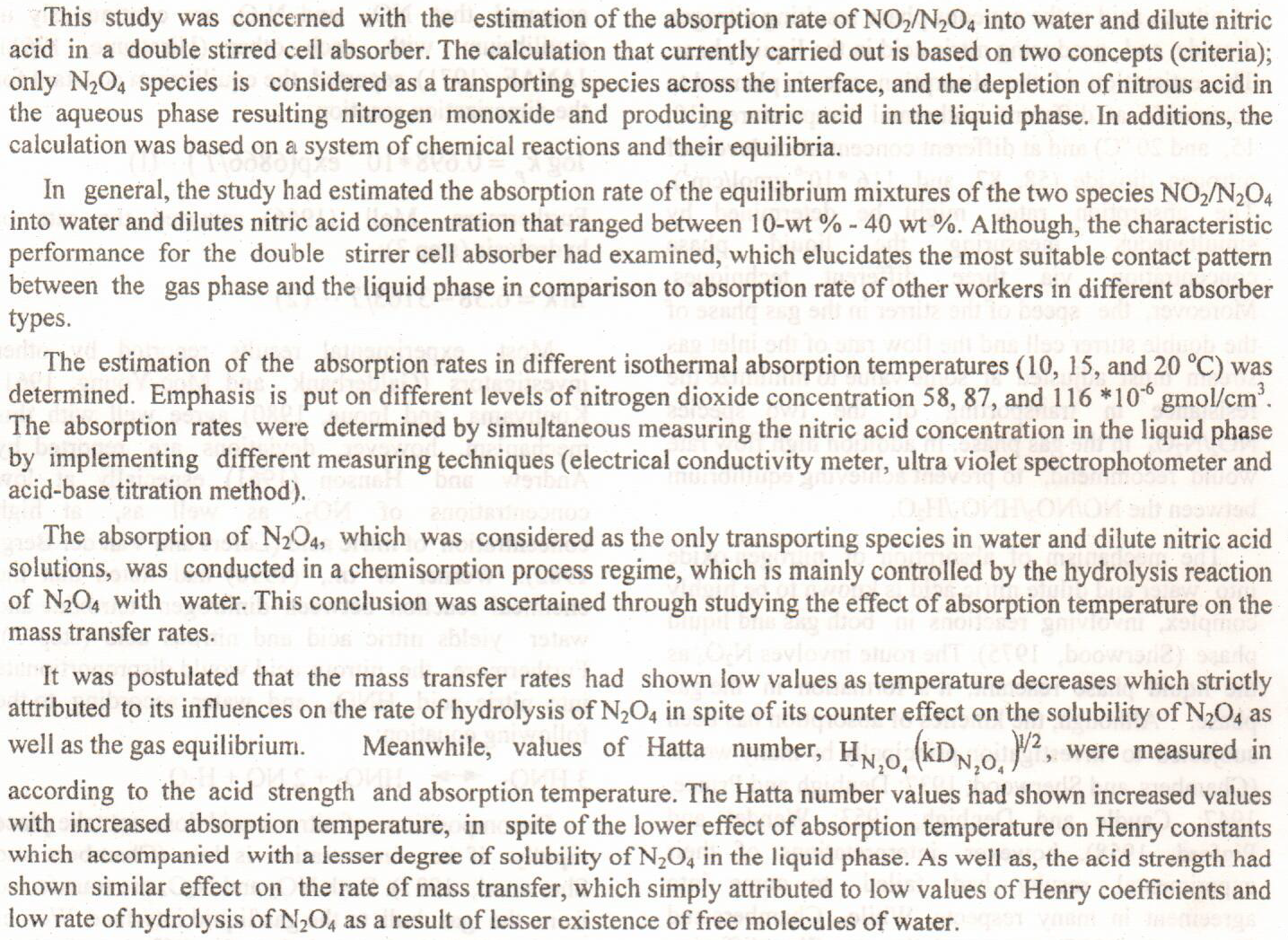
This experiment was carried out at a private field in the eastern Radwaniyah Baghdad for the fall season 2020/2021 and spring 2021 to study the effects of adding mineral fertilizers, spraying salicylic acid and amino acids on some growth traits and yield of industrial potato plants. 200 kg N h-1 , 100 kg P2O5 h-1, 100 kg K2O h-1 and F2 consist of 275 kg N h-1, 180 kg P2O5 h-1, 200 K2O h-1 and F3 consist of 350 kg N h-1, 360 kg P2O5 h-1, 300 K2O h-1 and salicylic acid in three concentrations of 0,50 and 100 mg L-1 ( S1, S2, S3) and amino acids in three concentrations of 0, 1.25 and 2.5 ml L-1 ( A1, A2 , A3) It was carried out as a factorial split plot experiment, where the fertilizer levels (F1, F2 and F3) are in the main plot and th
... Show More (1)
(1)
 (1)
(1)
 (17)
(17)
The effect of chronic exposure to two different levels of cadmium chloride (CdCl2) 30 ppb and 40 ppb in drinking water for 12 weeks on thyroid function of mature male rabbits was studied. Eighteen mature male rabbits were randomly divided into three groups (each of six ) , control group (group I ): were offered ordinary tap water , and treated groups (II and III ) were offered tap water containing 30ppb and 40 ppb respectively for 12 weeks .Serum concentration of thyroxin (T4 ) and triiodothyronine (T3) were measured every six weeks ,as an index of thyroid function , further more , section of thyroid gland were prepared for histological studies. The results showed that chronic exposure of male rabbits
... Show More (183)
(183)
 (119)
(119)
Molecular interactions between 2-isopropenylnaphthalene-methacrylic acid (IPNMA) block copolymer( as a model for water- soluble polymer) and methanol at several temperatures were studied using fluorescence techniques , Fluorescence spectrum for (IPNMA) exhibits two emission bands at around 342 nm and 387 nm corresponding to the monomer and the excimer bands , respectively .The fluorescence spectra of dilute solution of (IPNMA) in methanol were recorded in temperature range of 8- 45?C . Plot of the excimer to monomer intensity ratio Ie/Im versus temperature was obtained, which shows double lines with positive slopes crossing at 25?C , the increasing of slope value above this temperature is s
... Show MoreIn this research, the performance of electrocoagulation (EC) using aluminum (Al) electrodes with Monopolar- parallel (MP-P), and bipolar - series (BP-S) arrangement for simultaneous removal of dissolved silica, and hardness ions (calcium, and magnesium) from synthetic blowdown water of cooling tower were investigated. The effects of current density, initial pH and time of electrolysis on the removal efficiency were studied in a batch stirred unit to find out the best-operating conditions. The obtained results for each target species are evidence that BP-S approach is the best for both electrodes configuration operated at a Current density of 1mA/cm2 through 30 min of treatment and pH=10 with the removal of
... Show More (5)
(5)
Safe drinking water is essential for the present and future generations' health. This study aims to assess drinking water quality in Baghdad's Al-Rusafa neighborhood. Water samples were taken from 32 neighborhoods on this side. The quality of the examined potable water samples differed depending on the water source. This investigation's pH, chlorine, EC, TDS, TSS, Cd, and Pb levels were below acceptable ranges. TDS levels in Al-Mada'in are more significant than acceptable (>600ppm) water levels. Bacteria have polluted six communities (Shigella, Salmonella, Escherichia coli, and Klebsiella). Bacterial quality of drinking water and gram-negative bacteria resistant to chlorine in Baghdad's municipal water supply. Regarding pH, the w
... Show More (20)
(20)
 (20)
(20)
Direct contact membrane distillation is an effective method for production of fresh water from saline water. In this study two samples were used as feed solutions; the first one was RO waste from Al-Hilla Coca-Cola Factory (TDS= 2382 mg/l) and the other was Haji Ali drainage water (TDS= 4127 mg/l). Polytetrafluoroethylene (PTFE) hydrophobic membrane supported with polypropylene (PP) was used as flat sheet form with plate and frame cell. Results proved that membrane distillation is an effective technique to produce fresh water with high quality from brine with low salinity content. With membrane area of 8x8 cm2, the volume of treated water decreased from 34.97 ml at first half hour to 33.02 ml after 180 min of
... Show More
